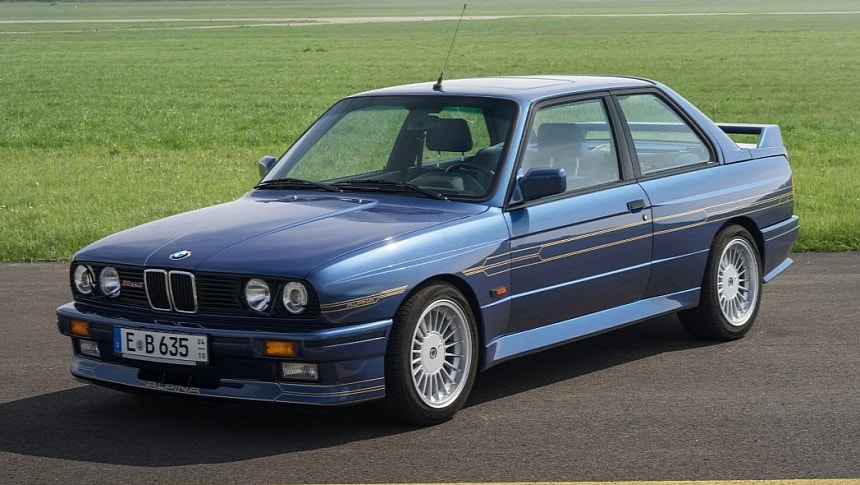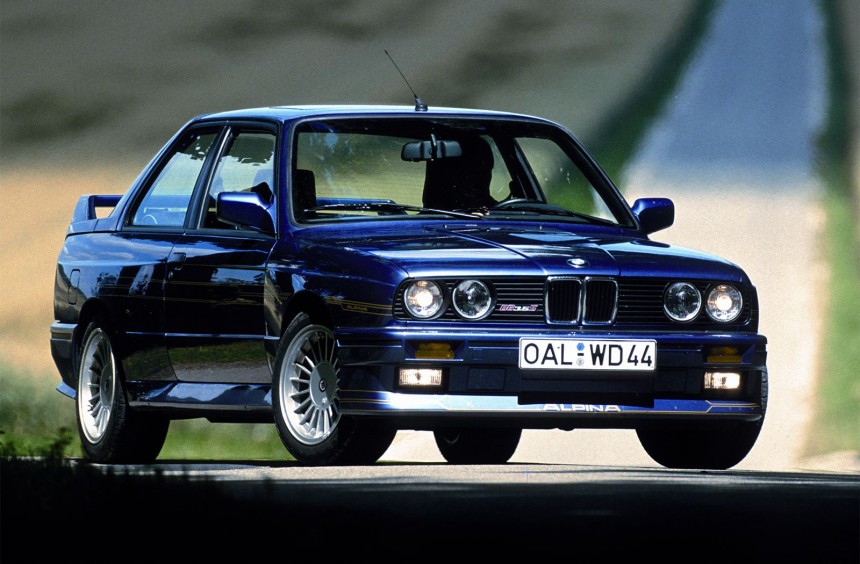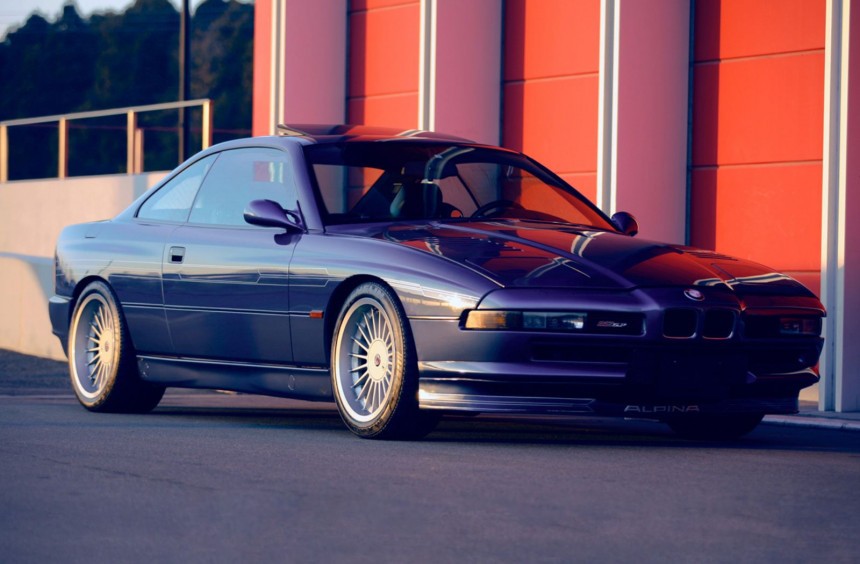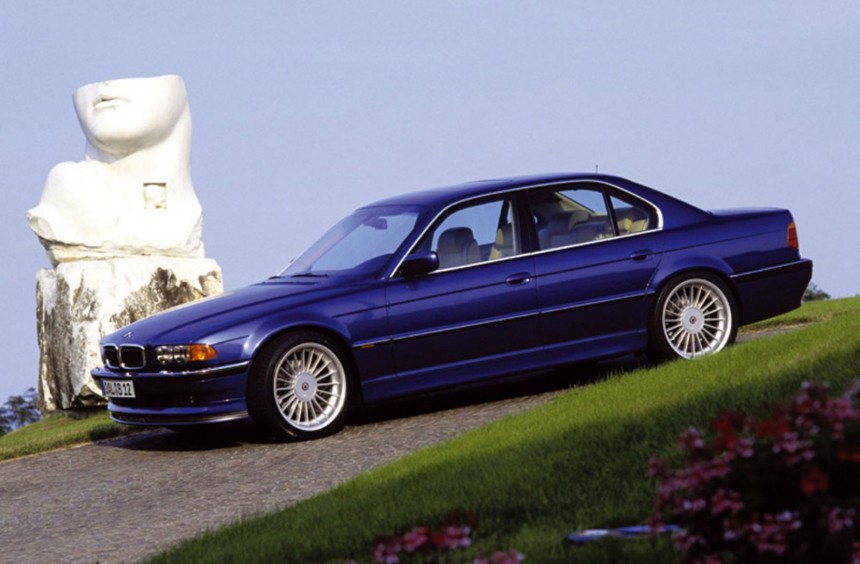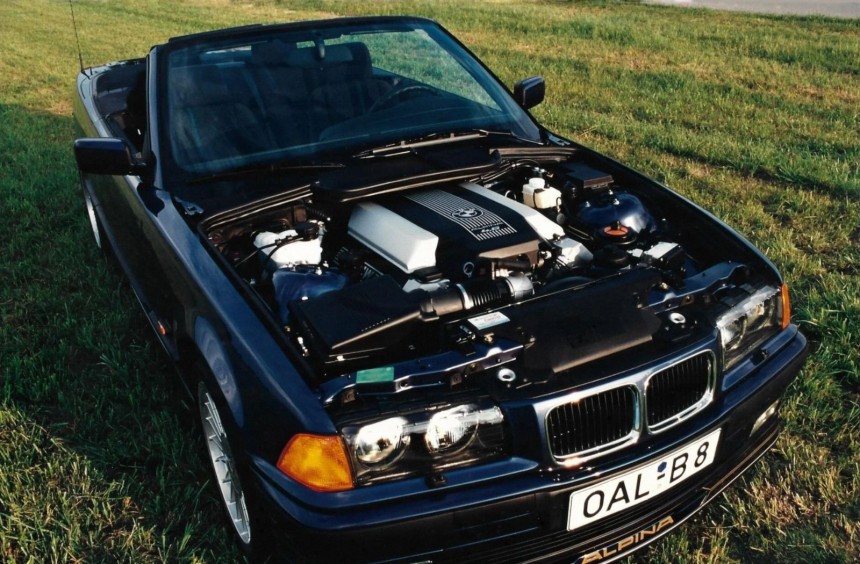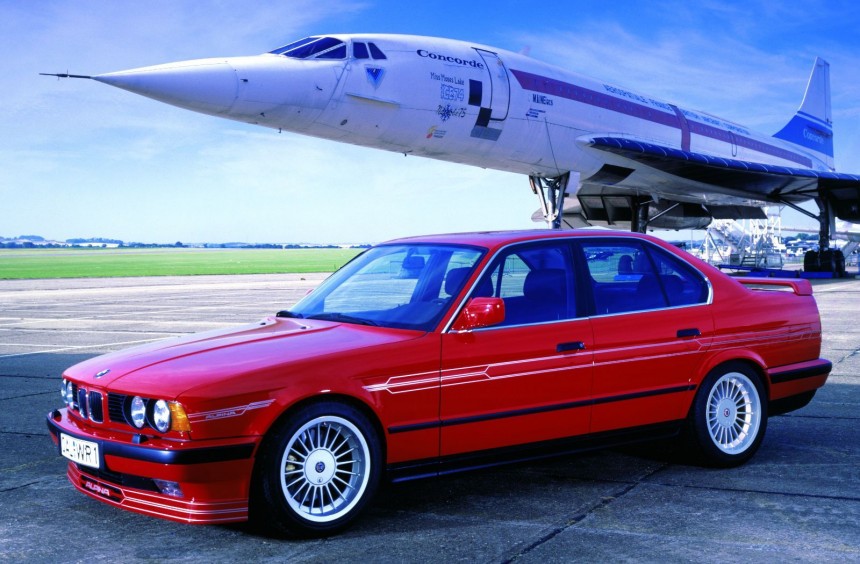There's a certain allure to classic BMWs, and while the M-badged models are iconic, some BMW enthusiasts prefer the more elegant Alpina models.
Established in 1962 by Burkard Bovensiepen, who at the time was a young engineering student with a passion for tuning his BMW, Alpina initially manufactured typewriters, but by the mid-1970s, it became Germany's most famous BMW tuner and handled some of the carmaker's motorsport programs.
By the mid-1980s, the German Ministry of Transport had officially recognized Alpina as an independent automobile manufacturer, and after withdrawing from motorsport, the company focused on developing some of the greatest daily-drivable performance BMWs.
Now owned by the Bavarian carmaker, Alpina continues to produce more refined high-performance alternatives to BMW's M-badged models.
While its current lineup is outstanding, in this article, we're going to remember the greatest classic models that came out of the Buchloe factory.
When it comes to the E30 3 Series, the most iconic version is, of course, the M3. Introduced in 1986, it became a sales sensation and a motorsport icon that continues to captivate BMW enthusiasts to this day.
However, apart from the M3, the E30 generation had another high-performance model worth remembering: the Alpina B6 3.5S.
While it used the E30 M3's body, which received subtle Alpina touches, the B6 3.5S had a six-cylinder under the hood.
Based on the 218-hp 3.5-liter found in larger BMWs at the time, the Alpina-tuned version at the heart of the B6 3.5S was rated at 254 hp - about 19 horses more than the most powerful version of the E30 M3's S14 DOHC four-pot.
Apart from the powerful six, the M3-based car received bespoke Alpina wheels and a custom interior, while the suspension system was shared with the M3.
The B6 3.5S was produced from 1987 to 1990 in only 62 examples.
Shortly after BMW introduced the E31 8 Series in 1990, Alpina came with its own version called B12 5.0, Coupe. Two years later, BMW launched the 850CSi, so Alpina followed up with a new B12 Coupe.
As the name implies, the B12 5.7 Coupe used BMW's S70B56 V12, which had just been enlarged to 5.7 liters.
Alpina engineers worked their magic on the twelve-cylinder, adding a beefed-up crankshaft, hotter cams, and an upgraded intake. The result was an output of 416 hp, a 31-hp increase over the stock setup.
Apart from the engine tuning, Alpina added an optional electronic clutch system for the Getrag six-speed manual, new wheels, bumper extensions, and an improved interior.
Able to reach a top speed of 186 mph (300 kph), the B12 5.7 Coupe coupe was produced in only 57 units.
Unveiled at the 1999 Geneva Motor Show, the facelifted E38 7 Series-based B12 6.0 became one of the fastest luxury sedans in the world.
Dubbed "the ultimate Autobahn stormer," it hid the largest-displacement engine ever fitted into an Alpina model. Based on the 5.7-liter M73 V12 enlarged to 6.0 liters, the powerhouse was rated at 430 hp, a 104-hp increase over the 7 Series' most potent engine.
Fitted with the customary Alpina interior and exterior upgrades, the B12 6.0 could accelerate from 0 to 62 mph (100 kph) in 5.9 seconds and reach a top speed of 181 mph (291 kph).
Even more impressive, the B12 6.0 covered a kilometer (0.62 miles) from a standstill in 23,5 seconds - which was faster than what a Ferrari F355 could achieve.
The B12 6.0 was built from 1999 to 2001, with a total of just 94 examples leaving the Buchloe factory.
For the second iteration of the M3 (E36) released in 1992, BMW used a more traditional naturally-aspirated six-cylinder instead of the four-pot made famous on the E30, but they also flirted with the idea of making a V8 available.
However, due to the complex chassis modifications needed, the Bavarians abandoned the idea, and the M3 had to wait until the 2000s to get a V8 engine.
In the Alpina camp, the idea of a V8-powered E36 3-Series was just too appealing to turn down, so after 42 chassis modifications, the company managed to pull it off.
The resulting model, dubbed B8 4.6, employed the 530i's 4.0-liter M60 engine, which was bumped up to 4.6 liters by using a redesigned block. Apart from the displacement increase, Alpina equipped it with higher-compression Mahle pistons, changed the valve timing, and developed a new sump as well as a new oil pump.
The result was a 333-hp V8, which made the B8 4.6 more powerful than the E36 M3.
Besides the V8 engine, the model received bespoke Alpina bumpers and wheels, a new exhaust system, a revamped Bilstein suspension system, and a reupholstered interior.
The B8 4.6 was produced from 1995 to 1998 in 221 units, 23 of which were convertibles, while the rest were two- or four-door sedans.
In 1988, BMW released the second M5, based on the E34 5 Series, and the model quickly became one of the world's most potent high-performance sedans.
However, just a year later, Alpina one-upped its partner with an even more outrageous machine.
Based on the 535i and not the M5, the B10 Bi-Turbo was the most ambitious project in Alpina's history, and 35 years later, it remains its most iconic model.
Like the M5, the Bi-Turbo used a six-cylinder, but as the name implies, the 3.4-liter M30 engine received a pair of Garret T25 turbos that drew cold air through a large intercooler, forged Mahle pistons, stronger conrods, and a redesigned cam with a more-aggressive profile.
With all those modifications, the bespoke M30's output was raised from 208 to 355 hp. This enabled the Bi-Turbo to accelerate to 62 mph (100 kph) from a standstill in 5.6 seconds and reach a top speed of 180 mph (288 kph), which made it the fastest sedan in the world at the time of its introduction.
In a memorable test conducted by the German automotive magazine Sport Auto, the B10 Bi-Turbo proved faster than the iconic Ferrari Testarossa.
By the mid-1980s, the German Ministry of Transport had officially recognized Alpina as an independent automobile manufacturer, and after withdrawing from motorsport, the company focused on developing some of the greatest daily-drivable performance BMWs.
Now owned by the Bavarian carmaker, Alpina continues to produce more refined high-performance alternatives to BMW's M-badged models.
While its current lineup is outstanding, in this article, we're going to remember the greatest classic models that came out of the Buchloe factory.
Alpina B6 3.5S
However, apart from the M3, the E30 generation had another high-performance model worth remembering: the Alpina B6 3.5S.
While it used the E30 M3's body, which received subtle Alpina touches, the B6 3.5S had a six-cylinder under the hood.
Based on the 218-hp 3.5-liter found in larger BMWs at the time, the Alpina-tuned version at the heart of the B6 3.5S was rated at 254 hp - about 19 horses more than the most powerful version of the E30 M3's S14 DOHC four-pot.
Apart from the powerful six, the M3-based car received bespoke Alpina wheels and a custom interior, while the suspension system was shared with the M3.
The B6 3.5S was produced from 1987 to 1990 in only 62 examples.
Alpina B12 5.7 Coupe
As the name implies, the B12 5.7 Coupe used BMW's S70B56 V12, which had just been enlarged to 5.7 liters.
Alpina engineers worked their magic on the twelve-cylinder, adding a beefed-up crankshaft, hotter cams, and an upgraded intake. The result was an output of 416 hp, a 31-hp increase over the stock setup.
Apart from the engine tuning, Alpina added an optional electronic clutch system for the Getrag six-speed manual, new wheels, bumper extensions, and an improved interior.
Able to reach a top speed of 186 mph (300 kph), the B12 5.7 Coupe coupe was produced in only 57 units.
Alpina B12 6.0
Dubbed "the ultimate Autobahn stormer," it hid the largest-displacement engine ever fitted into an Alpina model. Based on the 5.7-liter M73 V12 enlarged to 6.0 liters, the powerhouse was rated at 430 hp, a 104-hp increase over the 7 Series' most potent engine.
Fitted with the customary Alpina interior and exterior upgrades, the B12 6.0 could accelerate from 0 to 62 mph (100 kph) in 5.9 seconds and reach a top speed of 181 mph (291 kph).
Even more impressive, the B12 6.0 covered a kilometer (0.62 miles) from a standstill in 23,5 seconds - which was faster than what a Ferrari F355 could achieve.
The B12 6.0 was built from 1999 to 2001, with a total of just 94 examples leaving the Buchloe factory.
Alpina B8 4.6
However, due to the complex chassis modifications needed, the Bavarians abandoned the idea, and the M3 had to wait until the 2000s to get a V8 engine.
In the Alpina camp, the idea of a V8-powered E36 3-Series was just too appealing to turn down, so after 42 chassis modifications, the company managed to pull it off.
The resulting model, dubbed B8 4.6, employed the 530i's 4.0-liter M60 engine, which was bumped up to 4.6 liters by using a redesigned block. Apart from the displacement increase, Alpina equipped it with higher-compression Mahle pistons, changed the valve timing, and developed a new sump as well as a new oil pump.
The result was a 333-hp V8, which made the B8 4.6 more powerful than the E36 M3.
Besides the V8 engine, the model received bespoke Alpina bumpers and wheels, a new exhaust system, a revamped Bilstein suspension system, and a reupholstered interior.
The B8 4.6 was produced from 1995 to 1998 in 221 units, 23 of which were convertibles, while the rest were two- or four-door sedans.
Alpina B10 Bi-Turbo
However, just a year later, Alpina one-upped its partner with an even more outrageous machine.
Based on the 535i and not the M5, the B10 Bi-Turbo was the most ambitious project in Alpina's history, and 35 years later, it remains its most iconic model.
Like the M5, the Bi-Turbo used a six-cylinder, but as the name implies, the 3.4-liter M30 engine received a pair of Garret T25 turbos that drew cold air through a large intercooler, forged Mahle pistons, stronger conrods, and a redesigned cam with a more-aggressive profile.
With all those modifications, the bespoke M30's output was raised from 208 to 355 hp. This enabled the Bi-Turbo to accelerate to 62 mph (100 kph) from a standstill in 5.6 seconds and reach a top speed of 180 mph (288 kph), which made it the fastest sedan in the world at the time of its introduction.
In a memorable test conducted by the German automotive magazine Sport Auto, the B10 Bi-Turbo proved faster than the iconic Ferrari Testarossa.
